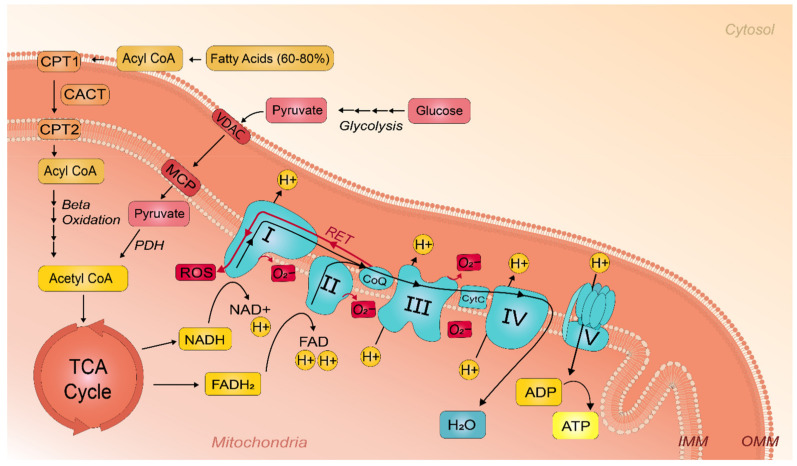Figure 1.
Schematic representation of ATP generation via fatty acid and glucose oxidation and leakage of reactive oxygen species in the mitochondria. Mitochondrial oxidative phosphorylation at the ETC is driven by the substrates NADH and FADH2, which originate predominantly from FA and carbohydrate oxidation. FAs pass the mitochondrial membrane as acyl-CoA by means of the carnitine acyltransferase membrane shuttles, consisting of CPT-1, CPT-2, and CACT. CPT1 converts acyl-CoA to acylcarnitine, which is subsequently transferred across the IMM by CACT. Inside the mitochondria, acylcarnitine is converted back into acyl-CoA by CPT-2. During β-oxidation, 2-carbon units are oxidized to produce acetyl-CoA, which is the substrate for the TCA cycle. Pyruvate traverses the mitochondrial membranes through VDAC and MPC. Once inside the mitochondrial matrix, pyruvate gets oxidized into acetyl-CoA to enter the TCA cycle. The reducing agents NADH and FADH2 are produced inside the TCA cycle. Electrons from NADH and FADH2 are donated to the complexes of the ETC, which translocate protons into the intermembrane space to establish a proton gradient for ATP synthesis. ROS are formed as by-products of the ETC. Not all of the electrons are transferred to the final electron acceptor as some leak out of the ETC into the mitochondrial matrix, followed by superoxide production. ROS overproduction contributes to oxidative stress and mitochondrial dysfunction.

